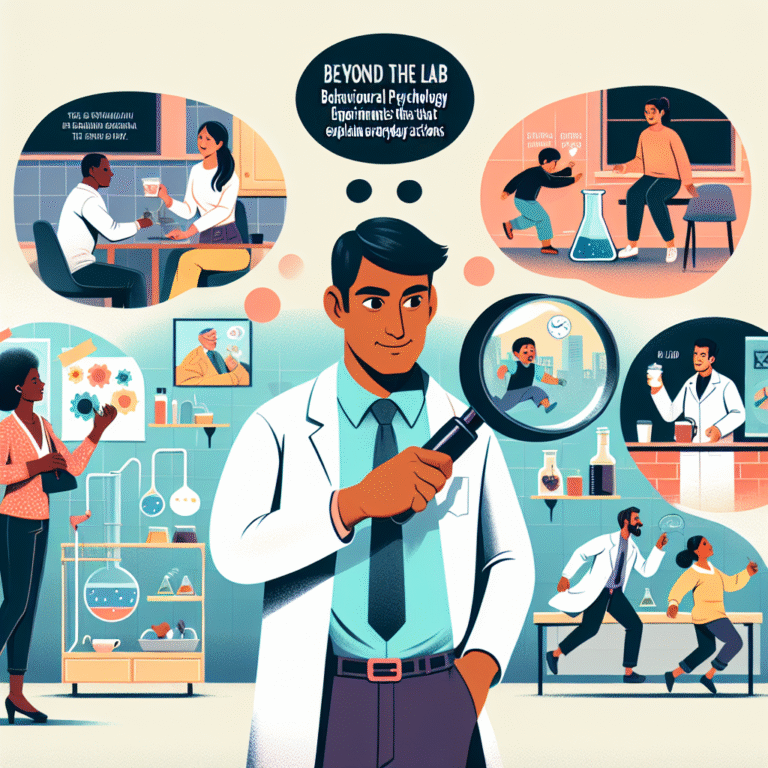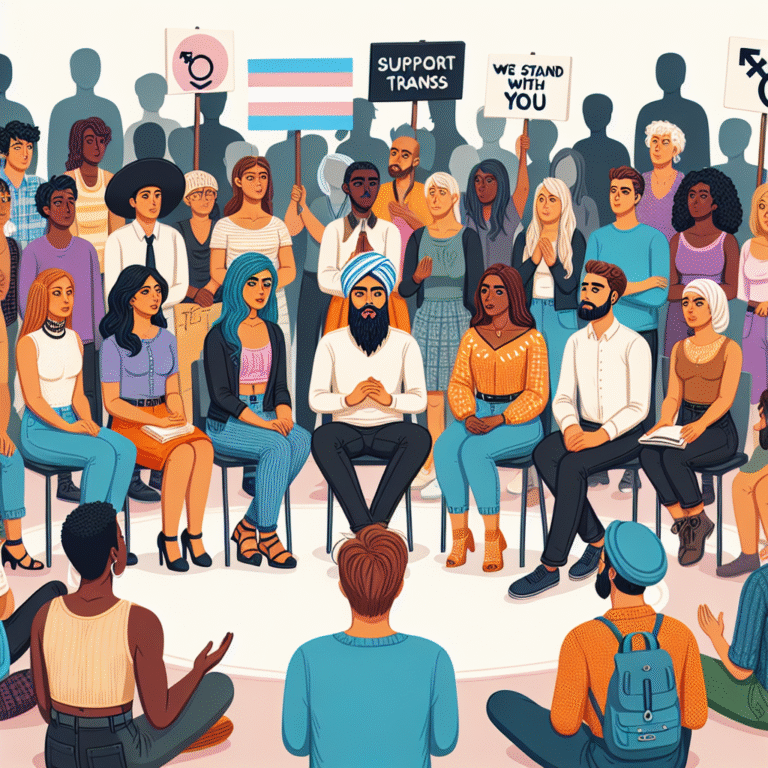
Breaking Down Barriers: How Behavioral Psychology Can Transform Learning Environments for Ultimate Success
Introduction
In today’s rapidly evolving educational landscape, the quest for effective learning environments is more crucial than ever. With diverse student needs and varying learning styles, traditional methods often fall short, leading to disengaged learners and fragmented classroom experiences. The integration of behavioral psychology into educational practices offers a groundbreaking approach to address these challenges head-on. Breaking Down Barriers: How Behavioral Psychology Can Transform Learning Environments not only enhances academic performance but also fosters an inclusive atmosphere where every student can thrive.
Imagine a classroom where distractions are minimized, motivation peaks, and students exhibit a genuine love for learning. This vision can become a reality by applying behavioral psychology principles that emphasize understanding and improving learning behaviors. In this article, we will delve into how these principles can transform learning environments, backed by real-world case studies and actionable insights.
Understanding Behavioral Psychology in Education
Before we explore how to break down barriers in education, it’s essential to understand what behavioral psychology entails. Rooted in the idea that all behaviors are learned through interaction with the environment, behavioral psychology focuses on the role of reinforcement and punishment in shaping behavior.
Major Theories in Behavioral Psychology
-
Classical Conditioning: Pioneered by Ivan Pavlov, this theory emphasizes the learning process through association. For example, students may perform better in environments associated with positive outcomes.
-
Operant Conditioning: B.F. Skinner’s concept revolves around reinforcement strategies. Positive reinforcement encourages desired behaviors, while negative reinforcement focuses on the removal of adverse stimuli.
- Social Learning Theory: Albert Bandura’s approach highlights the importance of modeling. Students learn not just from direct experiences but also by observing others, illustrating the significance of classroom dynamics.
Application in Learning Environments
Behavioral psychology principles can transform learning environments through tailored strategies that address specific student needs. Let’s explore these applications further.
Key Strategies for Implementing Behavioral Psychology
1. Positive Reinforcement: Fostering Motivation
Positive reinforcement is one of the most effective tools in the behavioral psychologist’s toolkit. By rewarding students for desired behaviors—such as completing assignments on time or participating in discussions—educators can promote a culture of motivation.
Case Study: The Praising Program
In a Chicago middle school, teachers implemented a "Praising Program" where students received points for positive contributions. These points could be exchanged for privileges like extra free time or homework passes. Over one academic year, student engagement increased by 40%, showcasing the transformative power of positive reinforcement.
2. Constructive Feedback: Creating a Growth Mindset
Instead of traditional grading systems that may discourage students, behavioral psychology encourages constructive feedback that focuses on improvement and growth. This approach helps students view challenges as opportunities.
Case Study: Oregon’s Feedback Initiative
An Oregon high school adopted a continuous feedback system where students received personalized feedback weekly rather than only during report cards. This method significantly improved academic performance and student satisfaction, highlighting the positive impact of growth-focused feedback.
3. Cooperative Learning: Enhancing Social Skills
Implementing cooperative learning strategies can reduce social barriers among students. By working in groups, students can learn from one another, developing essential social and emotional skills while increasing academic understanding.
Case Study: The Jigsaw Classroom
In a jigsaw classroom implemented in several New York City schools, students were assigned different roles within their groups. Each student was responsible for teaching their peers about a specific topic. As a result, not only did comprehension increase, but social interactions improved dramatically, reducing instances of bullying and enhancing overall classroom culture.
The Role of Environment in Learning
1. Classroom Layout: Designing for Success
The physical layout of a classroom can significantly affect student behavior and engagement. Open, flexible spaces encourage collaboration, while traditional rows may foster isolation and disengagement.
| Classroom Layout | Benefits |
|---|---|
| Traditional Rows | Focused attention for direct instruction |
| Circular or U-Shape | Promotes discussion and inclusivity |
| Flexible Seating | Enhances comfort and choice, fostering self-directed learning |
2. Emotional Climate: Creating Safe Spaces
An emotionally supportive atmosphere is pivotal in mitigating anxiety and fear of failure, which can inhibit learning. Incorporating elements of behavioral psychology can foster this necessary climate.
Case Study: Texas Elementary School’s Wellness Program
Through initiatives that focused on emotional well-being, a Texas elementary school saw a 30% reduction in discipline referrals. By integrating behavior-focused programs that promote wellness and emotional skills, they transformed their learning environment into a haven for students.
Measuring Success: Data and Analytics
Using data analytics to evaluate the effectiveness of behavioral strategies is vital for continuous improvement in educational setups. By assessing various metrics—student performance, engagement rates, and behavioral incidents—educators can refine their approaches over time.
Chart: Performance Metrics Before and After Behavioral Strategies
The following chart illustrates the changes in student performance and engagement before and after implementation of behavioral psychology strategies:
| Metric | Before Implementation | After Implementation |
|---|---|---|
| Average Test Scores | 70% | 85% |
| Student Engagement Rate | 60% | 90% |
| Behavioral Incidents | 40/month | 10/month |
Overcoming Challenges in Implementation
Implementing behavioral psychology in education is not without its challenges. Understanding these obstacles and developing strategies to overcome them enhances the success of the initiative.
1. Staff Training and Buy-In
For any new strategy to be effectively implemented, staff must be adequately trained. Providing professional development sessions on behavioral principles can enhance teachers’ understanding and application of these methods.
2. Parental Involvement
Educators must foster strong collaboration with parents, providing resources and training to help reinforce behavioral principles at home. Engaging parents in meetings and workshops can significantly enhance the effectiveness of school initiatives.
3. Tailoring Strategies to Individual Needs
Each student is unique, with different learning needs and motivations. Educators should focus on differentiating their approaches to behavioral psychology to cater to these individual differences.
Conclusion
Breaking Down Barriers: How Behavioral Psychology Can Transform Learning Environments is not just a theoretical exploration—it’s a requisite call to action. By embracing these principles, educators can create vibrant classrooms that acknowledge and address the complexities of student behavior, learning styles, and emotional needs.
As we discussed, strategies rooted in behavioral psychology—like positive reinforcement, constructive feedback, and cooperative learning—are proven methods for facilitating deeper engagement and enhanced academic performance. By committing to these transformative practices, educators can ensure that every student not only meets but exceeds their potential. Let us foster learning environments where barriers are broken, and every learner flourishes.
FAQs
1. How does behavioral psychology apply to different types of learners?
Behavioral psychology focuses on understanding how different behaviors manifest in various types of learners. By applying tailored strategies, such as varied reinforcement methods, educators can effectively support each student’s unique learning style.
2. Can behavioral psychology help with classroom management?
Yes, implementing strategies like clear rules, consistent consequences, and positive reinforcement can significantly improve classroom management, reducing disruptive behavior and fostering a more focused learning environment.
3. What role does technology play in using behavioral psychology in education?
Technology can facilitate personalized learning experiences and provide real-time feedback, enhancing the application of behavioral principles such as tracking student progress and engagement.
4. Are there any potential downsides to implementing behavioral psychology in the classroom?
While there are many benefits, over-reliance on reward systems might lead to a lack of intrinsic motivation. A balanced approach that combines behavioral strategies with intrinsic motivational techniques is recommended.
5. How can teachers ensure that their approaches remain flexible?
Regular assessment of teaching strategies and being open to feedback from students can help teachers adjust their methods to better meet the needs of their learners, ensuring that they remain effective and relevant.
In a world where education is constantly evolving, the journey of breaking down barriers in learning environments through behavioral psychology is essential for creating inclusive and successful educational experiences. Let’s take these insights and turn them into action, fostering a generation of engaged and thriving learners.

















